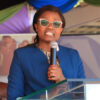The debate that we need women at the top has been raging for a while now. This debate has always gravitated around elective posts and boardrooms of blue-chip companies yet little is said about the media which is referred as the fourth estate.
It is the media that highlights this debate always yet it does not have gender balance itself in the newsrooms where male editors wield immense power of determining what is news and how it should be covered. Looking at the number of top editors in the Kenyan media will tell you that the media is preaching water but drinks wine because there is no gender balance at the top.
Apart from Nation Media Group’s Pamella Makotsi Sittoni who sits at a strategic decision-making position at Nation Centre, most or all other female editors in TV, Newspapers and Radio stations in Kenya are few and surrounded by male editors who call the shots. Something needs to be done urgently because the media cannot be in the forefront in championing gender balance and the two-thirds gender rule in Kenya yet it does not practice it itself.
And I dare ask, does it mean women cannot steer newsrooms and that is why they are placed at the periphery. In most Kenyan newsrooms, female editors are not placed at the top. They are assigned lighter roles and the ultimate decision-making process is left to male editors.
As demonstrated by a recent factsheet by the Reuters Institute released last month, this disparity is not only in Kenya.
The factsheet analysed the gender breakdown of top editors in a strategic sample of 240 major online and offline news outlets in 12 different markets across four continents. Only 22% of the 180 top editors across the 240 brands covered are women, despite the fact that, on average, 40% of journalists in the 12 markets are women, the fact sheet states.
Looking only at the 10 markets covered by the study in 2020 and again in 2021, 23% of top editors are women, the same percentage as last year. As clearly pointed out by in the study, top editors are important as they are key figures leading newsroom direction and decision-making, shaping what news and newsrooms look like.
Editors represent their outlets and, therefore, who they are matters for how specific news outlets are seen by audiences and for how the news media more generally are perceived by society. One of the aspects of who top editors are that matters both practically and symbolically is their gender.
For example, some scholars have pointed to the differences in news coverage which may emerge when newsrooms are run by women versus men (Beam and Di Cicco 2010; Byerly and McGraw 2020; Shor et al. 2015). That is why we in 2020 started mapping the gender of top editors at a sample of major outlets across a range of markets (Andı et al. 2020). From the study that analysed 178 brands included both this year and last year, the percentage of women among the top editors has changed from 22% in 2020 to 24% in 2021.
Among 37 new top editors across these brands, 16% of these are women. (There were 14% women among the outgoing top editors.) In 11 out of 12 markets, the majority of top editors are men, including countries like Brazil and Finland where women outnumber men among working journalists. (In South Africa, 62% of journalists and 60% of top editors in our sample are women.)As the study shows, the percentage of women in top editorial positions varies significantly from market to market. In Japan, as last year, none of the major news outlets in our sample has a woman as their top editor. In South Africa, a majority of the top editors are women.
The study clearly points out a comparison on the percentage of women working in journalism with the percentage of women in top editorial positions, depicting a positive correlation. Despite this, in 10 out of 12 markets, there are considerably more women working as journalists than there are women among the top editors.
It is time gender balance was also practiced in newsrooms, otherwise the media has no moral authority speaking about or highlighting gender parity issues.
























































